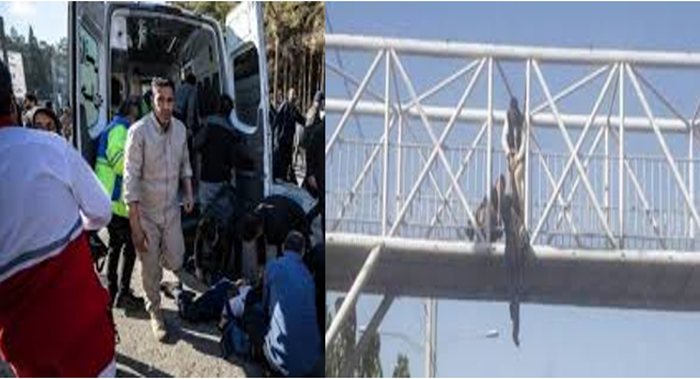
In a tragic development in Chavar, Ilam province, two petrochemical workers, Javad Nowrouzi and Mustafa Abbasi, took their own lives on Thursday, December 21.
Their desperate act of protest against unjust dismissal underscores a deepening crisis among workers in the region. The workers, dismissed by the petrochemical company’s general manager and security for undisclosed reasons, resorted to hanging themselves at the work site, driven by fears of unemployment and escalating livelihood challenges.
Their critical state necessitated urgent medical intervention, and they were promptly taken to a hospital with the assistance of their colleagues. Tragically, this incident is not isolated. In the past year, four workers in this sector have died by suicide. Despite these alarming events, both the petrochemical company’s management and the Ministry of Labor and Welfare under Raisi’s government have not taken sufficient steps to ameliorate the working and living conditions of the workers or to prevent further dismissals.
Ilam province bears the grim title of having the highest rate of citizen suicides in Iran, a situation largely attributed to rampant poverty and unemployment. Aggravating this are the exploitative practices of Chavar petrochemical managers. They routinely employ unemployed youths on temporary contracts with low wages, only to dismiss them later, replacing them with new workers to keep wages at a minimum. This relentless cycle has precipitated a series of suicides among the petrochemical workers in Chavar.

Official Iranian media reports reveal that at least eight workers have committed suicide over the summer quarter of this year alone, due to poverty and livelihood issues.
Notable cases include Heydar Mohseni, who ended his life on August 4 after being fired, and Arash Tobarak, who committed suicide in January last year following his dismissal. Additionally, Mohammad Nabi Mansouri, a 32-year-old worker, and Ali Mohammad Karimi, an unemployed employee, also succumbed to the overwhelming burden of livelihood problems and poverty.
In response to these crises, petrochemical workers in Chavar have organized sit-ins and rallies to protest dismissals and low wages, but their efforts have been met with military repression and further dismissals. A stark example occurred in 2017 when 15 workers were sentenced to prison and lashes by the Ilam Revolutionary Court for ‘disturbing public order’. More recently, about 300 protesting workers were fired, and a local journalist was arrested for publicizing a worker’s payslip on social media.
This crisis has escalated to a critical stage, with Iran’s livelihood crisis entering a perilous phase, described by some as ‘escape from poverty by suicide’. Labor and union organizations in Iran, through media reports and Telegram channels, have highlighted the dire situation of the workers, who are bearing the brunt of economic pressures, leading to despair and disillusionment.

MEK Iran (follow us on Twitter and Facebook), Maryam Rajavi’s on her site, Twitter & Facebook, NCRI (Twitter & Facebook), and People’s Mojahedin Organization of Iran – MEK IRAN – YouTu
